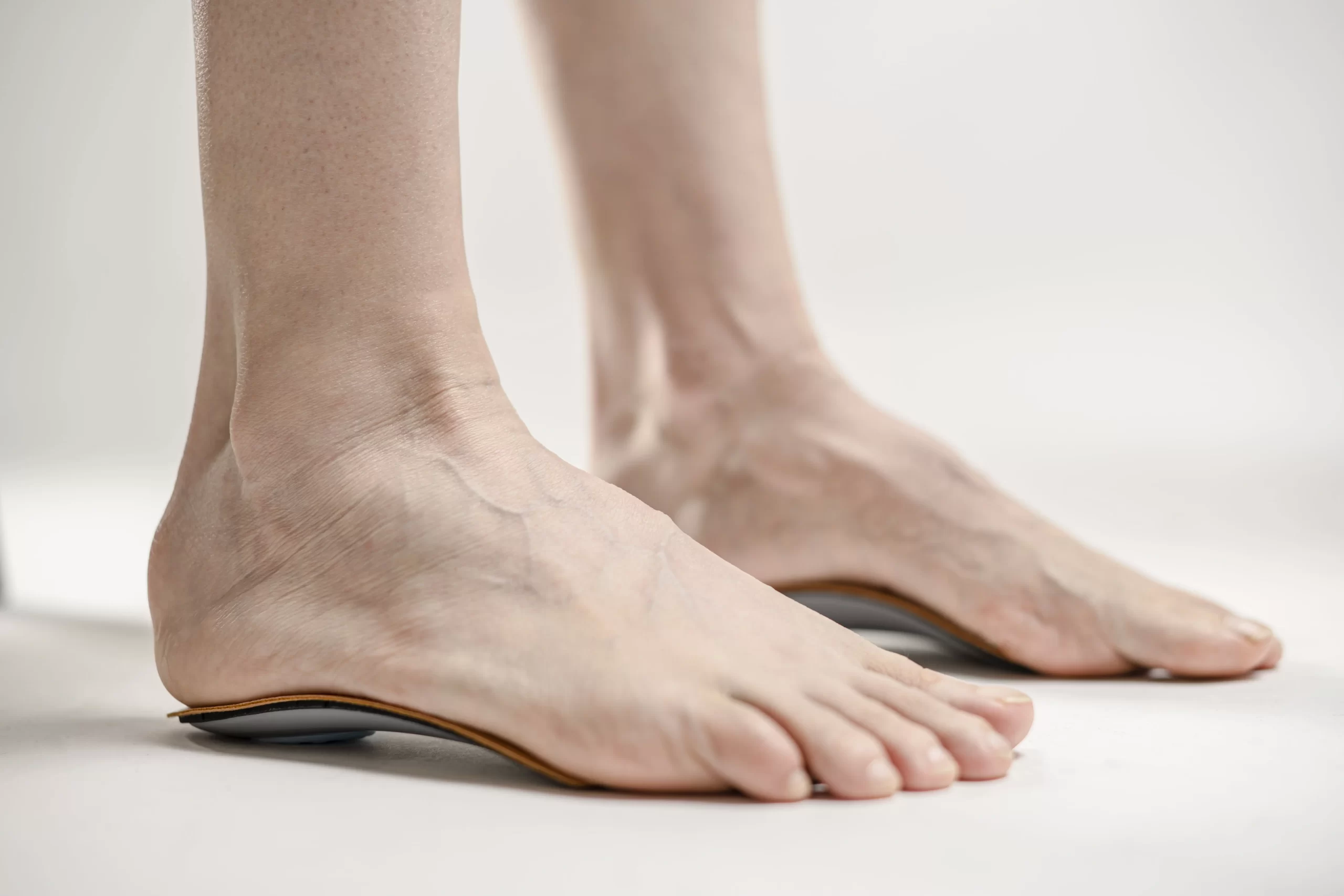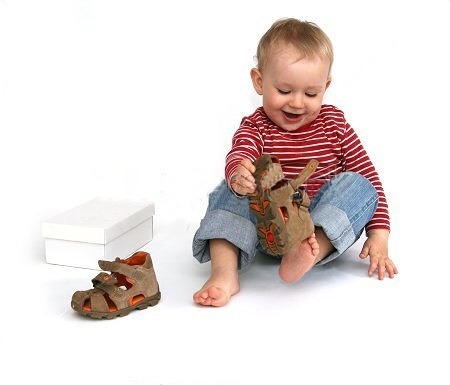Flatfoot
There are arches formed by the muscles and bones constituting a foot. The absence of the inner longitudinal arch, the most important of these arches, is called “flatfoot.” This condition, also called flexible flatfoot, is considered normal and followed up to the age of five, if there are no other underlying abnormalities. This appearance in the foot continues until the foot shape of the child is formed and the ligaments are strengthened. The foot arch is formed when these children walk on their tiptoes, or when they sit on the bedside swinging their feet.

When the child is around four or five years old, the arch begins to appear while standing as the ligaments and the muscles that balance the foot are strengthened, and the foot gets the normal shape. In some children, the arch may not occur at all, the flexibility continues, but they do not encounter any problems in their daily lives and even may be professional athletes. These children may experience pain in the anterior or posterior part of the tibia between the knee and the foot when they become taller and increase in weight. It does not pose a problem in the case that the insoles are used, as this pain is mild.
In another group of children, besides the general appearance of the foot, the foot looks like a flatfoot, and indeed there is a congenital problem in the connection of the foot bones. In these children, the arch does not form when they sit on the bedside swinging their feet, or even when they walk on the tiptoes, and pain may occur. In such cases, x-ray examination should be performed considering that there is another underlying bone problem. Therefore, parents should consult orthopedists, in the case that they notice a remarkable problem in their child’s feet. However, it should also be known that there is often nothing to worry about.
The Relationship Of Flatfoot With Shoe And Choosing The Right Shoe
When the child first starts walking, he/she does not need to wear shoes in the house. When the child goes to the orthopedist with an appearance of flatfoot and it is understood that the child has a flexible flatfoot, he/she should come to the clinic at intervals of six months and one year, and his/her gait should be controlled. If there is no other reason for the flatfoot, the child does not need to wear shoes in the house. It is also important to know that the shoe will not shape the child's foot. It should not be considered as a casting. Whether or not the child wears shoes, the problem will already be eliminated when the time comes, if there is a possibility for it to be eliminated.
On the other hand, it is necessary to pay attention for the choice of shoes, whether or not the child has a flatfoot appearance. The heel of the shoe should be slightly stiff; because the child is just starting to walk, so the heel must be kept fixedly on the ground, and the heel is not desired to shift to the left over the sole of the shoe when the child steps on the ground.
The sole of the shoe should have a ridge supporting the inner arch of the foot. Another important point to be considered is that the entire sole of the shoe should not be soft. It is not recommended for the entire sole to be bendable. It is an important criterion that the area corresponding to the metatarsal bone is flexible and the other areas are not very flexible.
Custom-made shoes should not be used unless the doctor considers it necessary. The majority of the children with flatfoot also have familial ligament flexibility. These children can open their wrists more than ninety degrees and raise their fingers upwards at an extreme level, and their knees can bend backwards too much without pain, while standing. The possibility of flexible flatfoot is very high in this group. As they grow up, they can continue their normal lives without a problem.
When the child grows up and become an adult, secondary changes may begin to occur due to weight gain or long-term standing. One group of the muscles crossing the ankle may develop insufficiency. The first sign is pain in the inner part of the foot. This is similar to adult flatfoot. In the examinations, insufficiency of one of the tendons, or calcification in the bones may occur; harder insoles, treatment with casting and further, a bone or tendon surgery may be required. However, these people are recommended firstly to lose weight.
Bone Problems And Solutions
In children who have a complaint of flatfoot, an underlying bone abnormality can sometimes be detected. This is usually a simple bone abnormality. A bone spur may be detected in the medial part of the inner part of the child’s foot. This is a congenital change. Normally, there should be a bone spur in that area, but there may be another bone structure on that spur. A lot of extra bones can be seen in the anatomy of the foot, which is normal, and this is one of those bones. However, the bone at the inner side may be more pronounced as the foot turns inward and the heel turns outward, and this causes problems such as chafing against the shoe and redness. Insoles are recommended for these children, even if there is no pain.
If the redness greatly increases with age, this bone should be removed, which is a simple procedure. More seriously, some defects related to the alignment of the bones may occur. When they are noticed, they can be solved by treatment with casting, or various surgeries.


